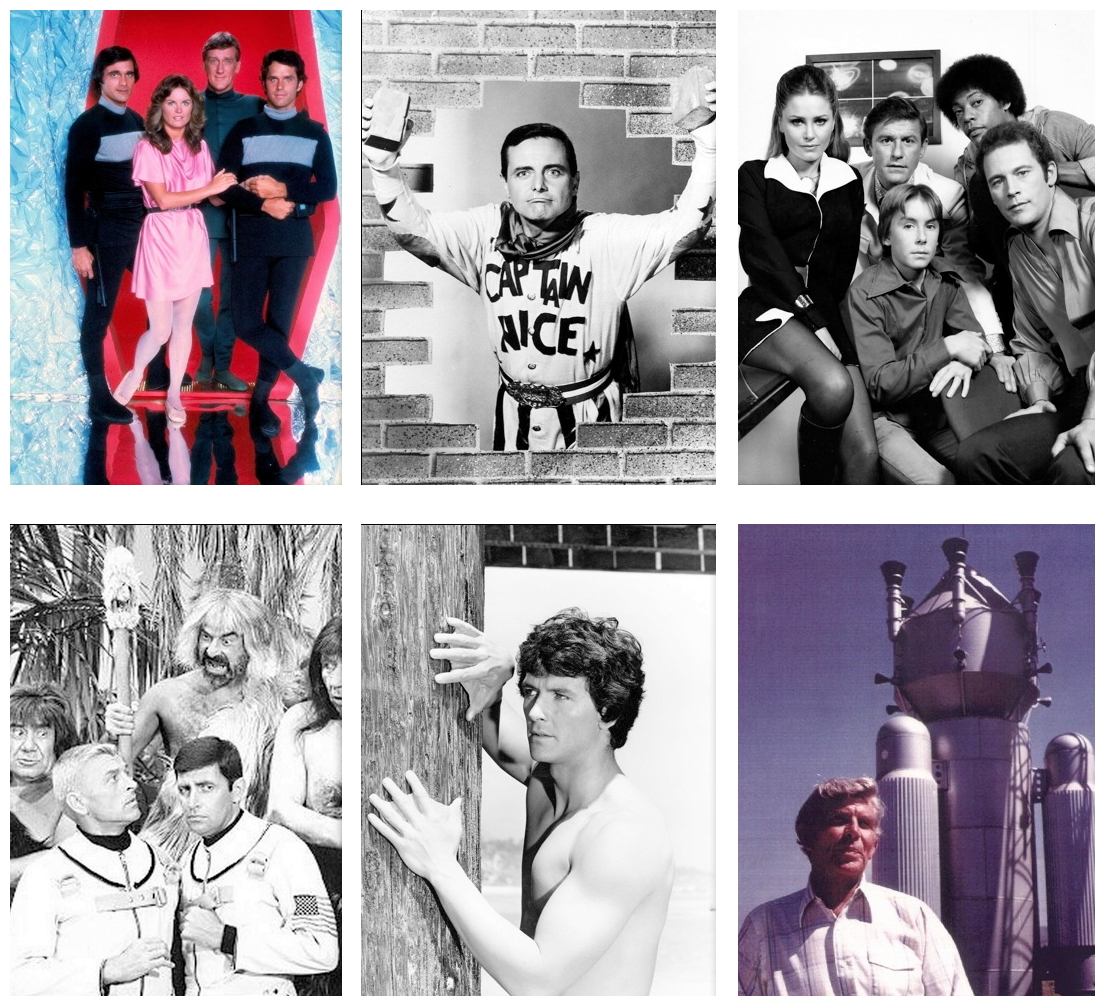
No one mourns for Gronk. Well, okay, it’s a big world, maybe somebody out there does mourn for Gronk, but it’s not legions, and I’m certainly not talking about multi-million-dollar movie franchises, Next Generation television spin-offs, or even Gronk conventions. I’m talking about Gronk the forgotten. Gronk was the name of comedian Joe E. Ross‘s buffoon caveman character in the mid-sixties situation comedy It’s About Time. If you don’t remember the character, the show or even Ross (he was better known as a buffoon policeman in Car 54 Where Are You?), that’s okay. In fact, that’s my point. You see, not every science fiction series gets lucky like Star Trek or The Prisoner. The legends of those two series still thrive long after their relatively brief network runs, but they are exceptions to the rule, golden ones blessed with kismet, or karma, or a gazillion dedicated fans. Suffice to say that It’s About Time and its misfit kin never had much going for them karma-wise. Such shows didn’t attract much attention during their network days, and even less after their quick cancellations. To be frank, there’s usually a reason why these shows were forgotten – they weren’t very good. But because everyone deserves to be remembered – just a little bit – come with me now as we trawl Television-Land for the Top 20 Schlocky Sci-Fi Shows Of All-Time!
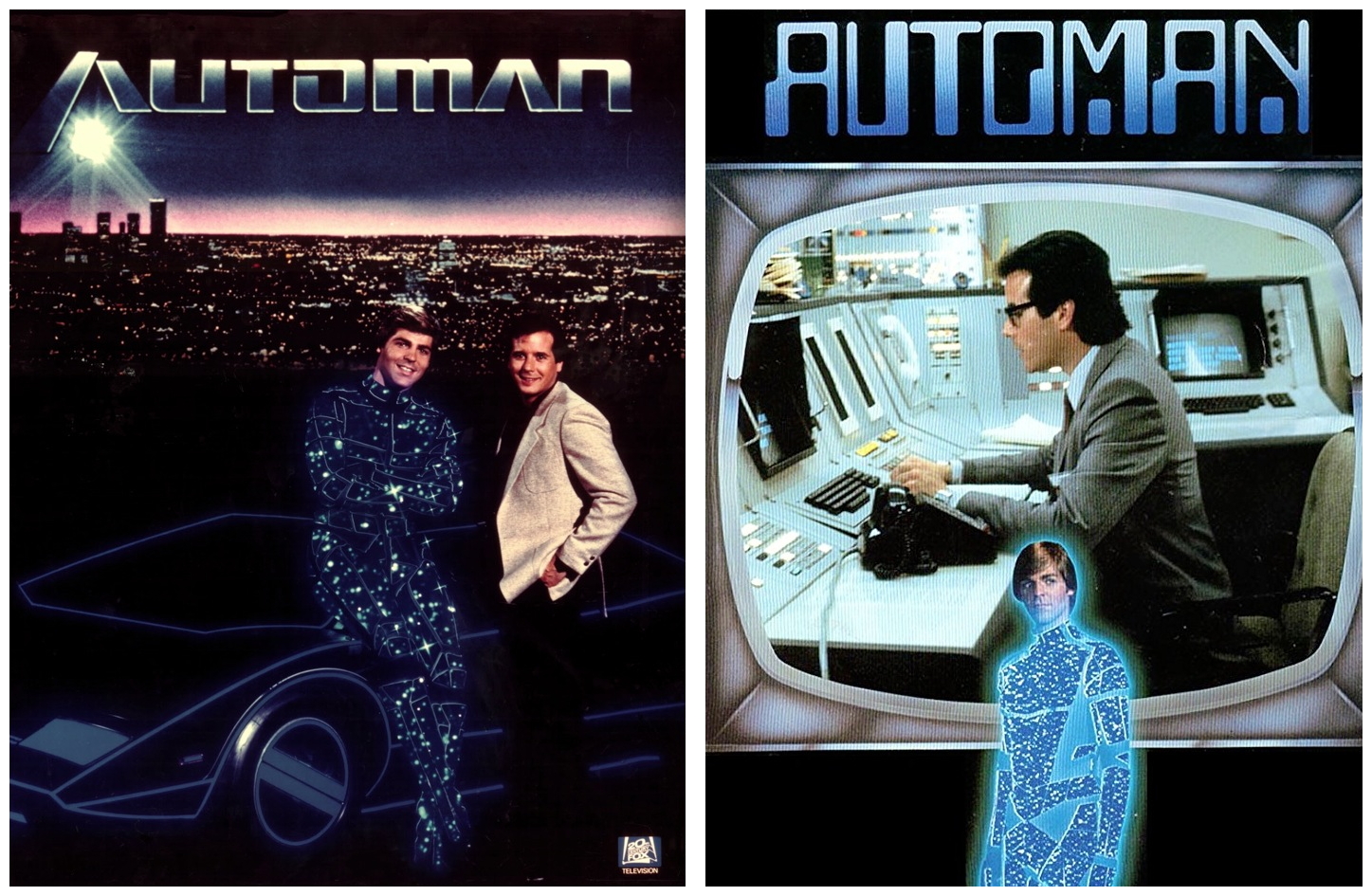
AUTOMAN (13 episodes 1983-1984) starring Chuck Wagner, Robert Lansing & Desi Arnaz Jr. The title character of this American crime adventure series is a glowing hologram, a three-dimensional computer-generated picture who becomes a super sleuth. Automan starts life as a character in a computer, created by Los Angeles policeman Walter Nebicher. Walter, who’d rather be out on the streets chasing crooks, is stuck with a job on the police computer at headquarters. His boss doesn’t think much of Walter or his computer, until Automan comes along to walk through walls and reach the criminals other cops can’t. Needless to say, the pair become Los Angeles Police Department’s ‘brightest’ crime-fighting duo.

BEYOND WESTWORLD (5 episodes 1980) starring Jim McMullan, James Wainwright, Connie Selecca, William Jordan & Severn Darden. Westworld (1973) was an amusement park where superhuman androids helped visitors fulfil their wild west fantasies. In Beyond Westworld, the powerful robots are sprung from the amusement park and sent out into the big wide world by the megalomaniac scientist creator Simon Quaid as the advance guard for his vision for a perfectly programmed society. Ranged against them are John Moore and Pam Williams, the top agents of Delos, the giant corporation behind Westworld. They must expose and prevent the android threat whenever and wherever it occurs. Helping them out at Delos headquarters is computer genius Professor Oppenheimer.
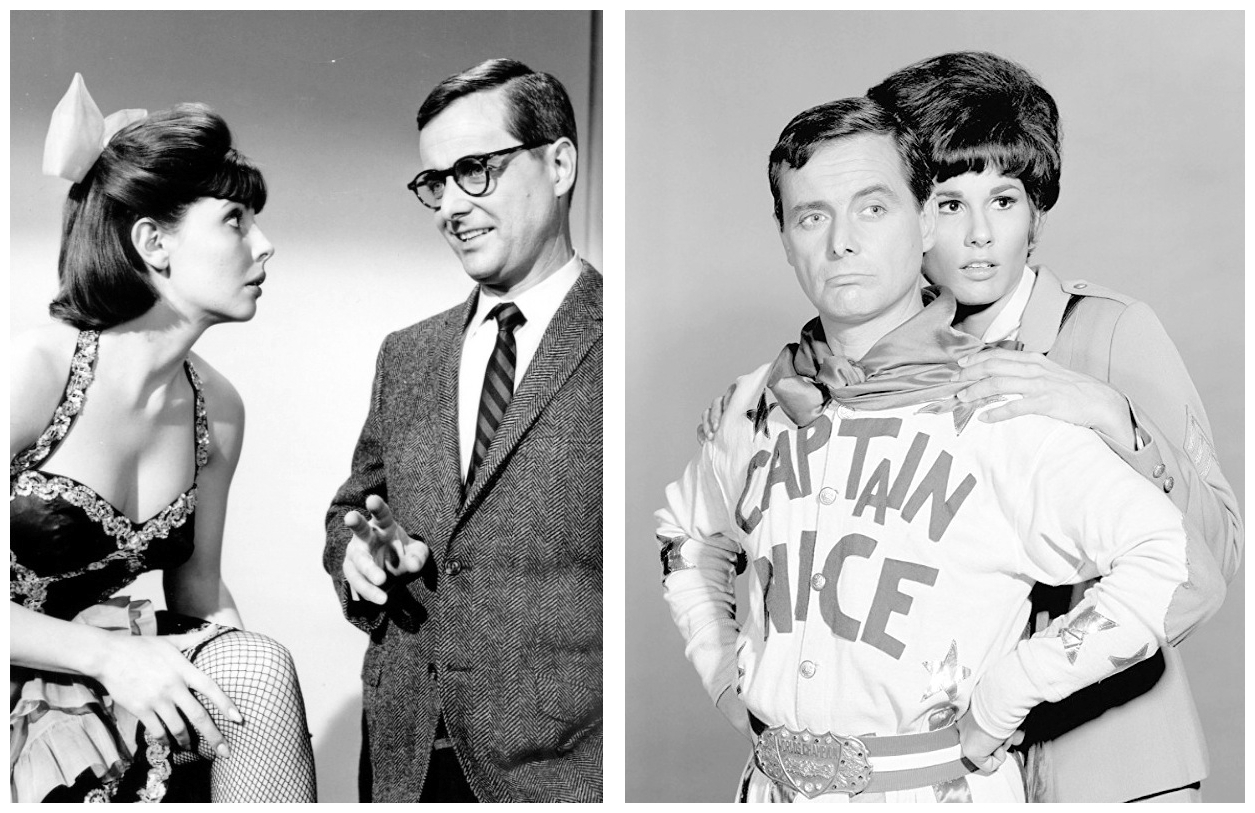
CAPTAIN NICE (15 episodes 1967) starring William Daniels, Alice Ghostley & Ann Prentis. Not all forgotten shows are examples of television flotsam. Some are actually kind of cute – cute but cursed nonetheless. Such is the sorry case of Captain Nice. Created by Buck Henry of Get Smart and The Graduate (1967) fame, this NBC sci-fi sitcom told the story of a most unlikely superhero – one Carter Nash, a mild-mannered police-department chemist who developed a chemical beverage that gave him the ability to fly. Nash patrolled the mean streets in a superhero costume that consisted of one pair of pyjamas, plus holes. Daniels was pretty good, the writing had its clever moments, and The Hollywood Reporter praised its zany music and concept, but was disappointed by its lack of actual plot. Inspired by the success of the camp comedy Batman (1966), Captain Nice had one other major foe: Mister Terrific (17 episodes 1967) starring Stephen Strimpnell as a mild-mannered service station attendant who, when he ingested a magic pill, could fly and fight crime. In one of those harmonic convergences of network programming, Mister Terrific aired at 8pm Mondays on CBS, followed by Captain Nice at 8.30pm the same night on NBC. Unfortunately, mild-mannered-superhero overload doomed both series, cancelled each other out, and both shows ended their brief network stints on the very same day, the 28th of August 1967.
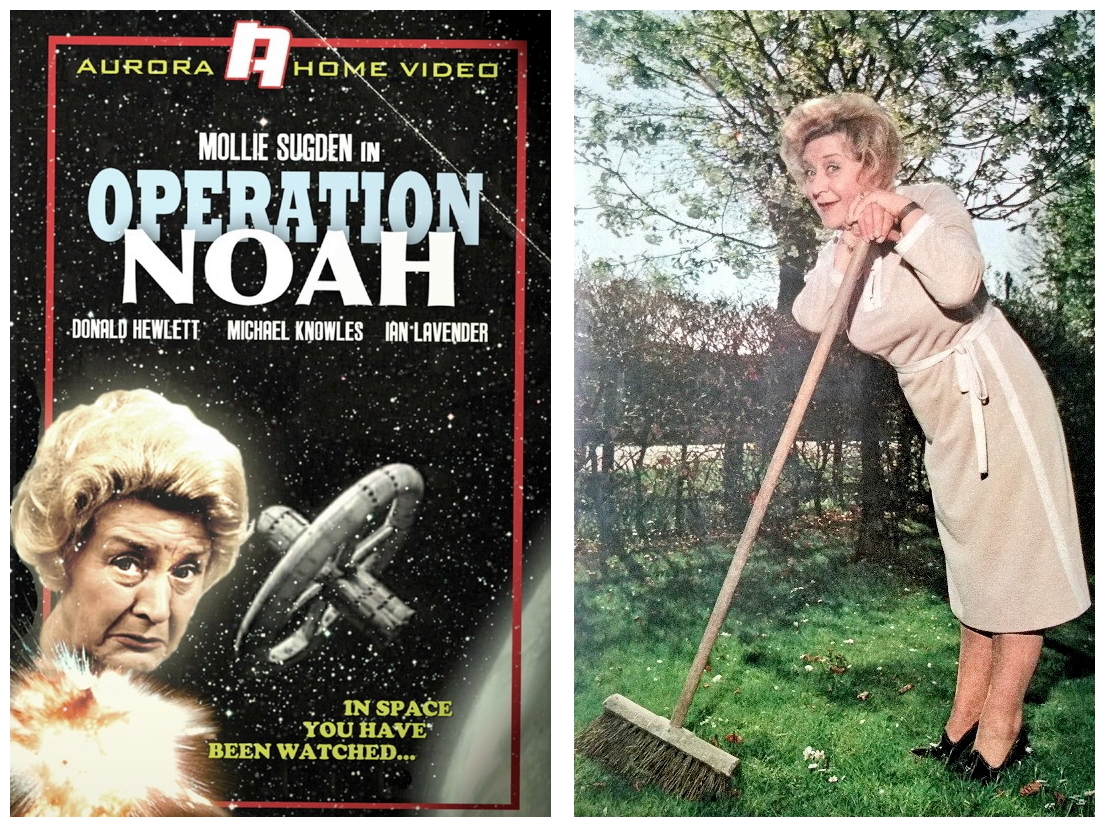
COME BACK MRS NOAH (6 episodes 1977-1978) starring Mollie Sugden, Ian Lavender & Gordon Kaye. From the creators of Are You Being Served? and ‘Allo ‘Allo comes a sitcom in space starring Mollie Sugden as a prize-winning no-nonsense 21st century housewife who wins a trip around Britain’s new space station and accidentally gets launched into orbit along with a motley crew including roving reporter Clive Cunliffe. Jokes centred on Mrs Noah regarding the spaceship as nothing more complicated than a vacuum cleaner, as she and the others adjust to life in the 35,000 mph fast lane, and await the efforts of mission control to rescue them.
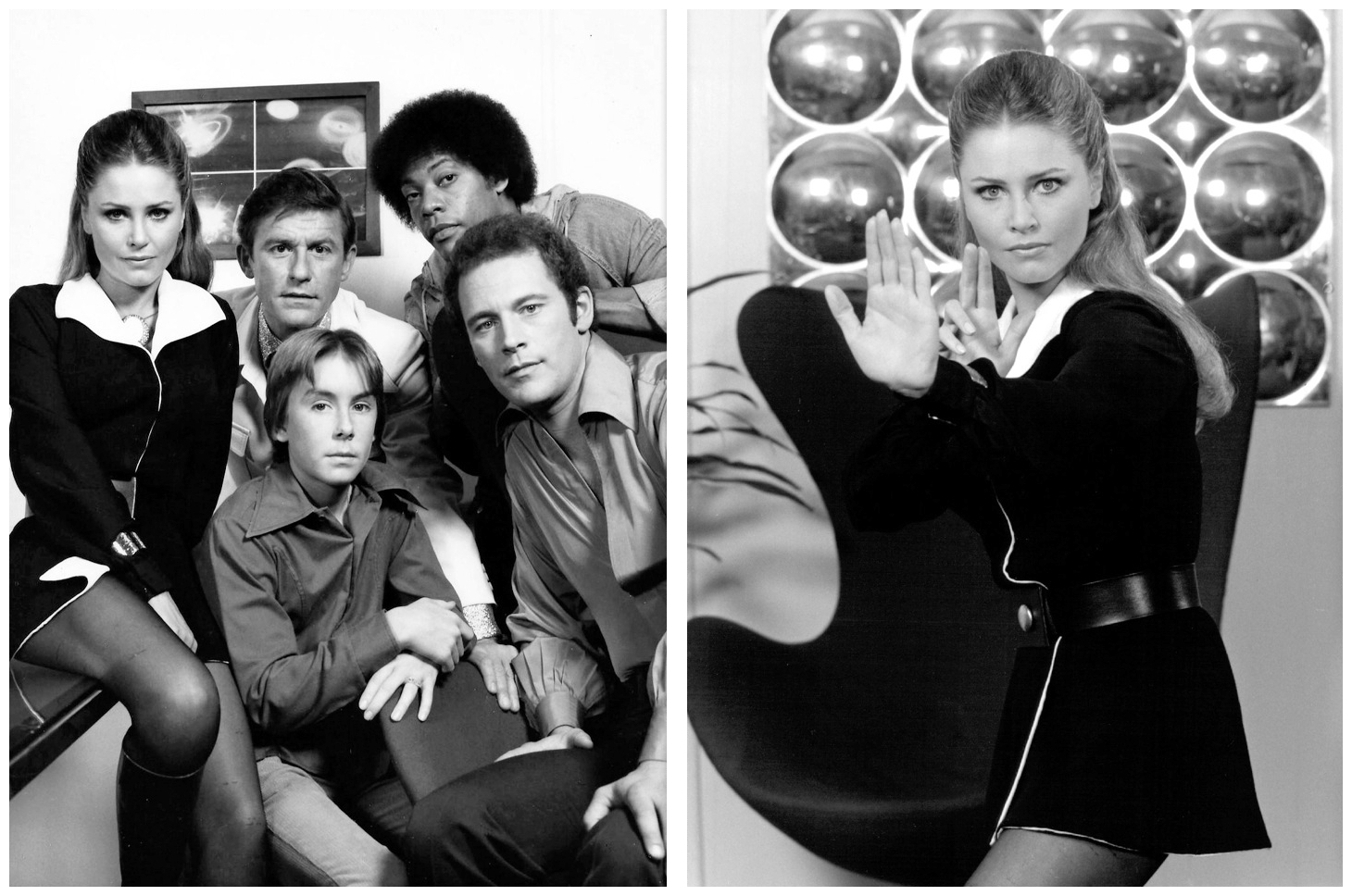
THE FANTASTIC JOURNEY (10 episodes 1977) starring Jared Martin, Carl Franklin, Ike Eisenmann & Katie Saylor. This series was slap-bang in the middle of the most interesting eras of American television. The lowly third-placed network NBC of the seventies engaged itself in some desperate attempts to attract younger viewers by bombarding the tykes with all sorts of laser beams and spaceships and people with strange-yet-wonderful powers. Of such things was borne The Fantastic Journey, an hour-long drama about people trapped in a time-warp. The travellers – Varian is a Sensitive-New-Age-Guy from the 22nd century, Liana is from the lost city of Atlantis, and Fred and Scott are just a couple of average guys from 1977 – were each pulled into the time-space continuum via the Bermuda Triangle which, according to the pilot, is a glowing green cloud of smoke. The gang wandered through the poorly-disguised hillsides of Los Angeles looking for ways back to their respective homelands. Along the way they met up with bad guys, including the likes of Gary Collins and Mary Ann Mobley who, in one episode, portrayed a space-age couple from ‘Antlantium’ or, as some people used to call it, the Westin Bonaventure Hotel in downtown L.A. Not surprisingly, one of the major problems with The Fantastic Journey was that it didn’t look all that fantastic. More to the point, it looked like a family’s home movies of a day in the park – mildly interesting maybe, but certainly not fantastic. Not even the presence of Ike Eisenmann, the spooky kid from the kiddie cult classic Escape From Witch Mountain (1975), or the last-minute cast addition of Roddy McDowall as a sixties-era scientist could sufficiently raise the fantastic-quotient of The Fantastic Journey. Facing such network competition as Welcome Back Kotter and The Waltons, the time travellers were soon banished from our televisions.
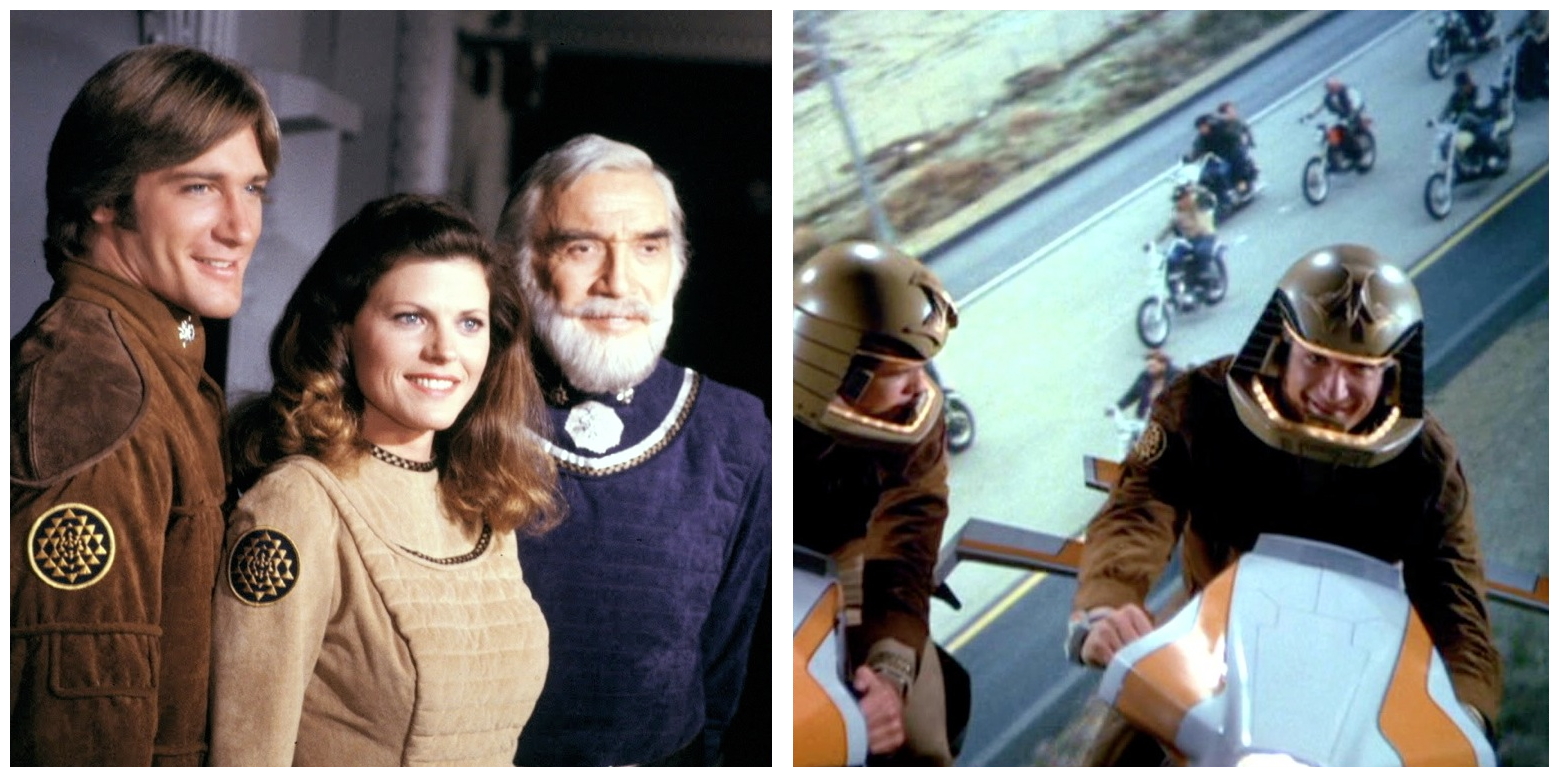
GALACTICA 1980 (10 episodes 1980) starring Lorne Greene & Kent McCord. This hastily produced sequel to Battlestar Galactica was not well received. In America, the ABC network had wanted Galactica 1980 produced quickly to fill a gap in their early evening schedules, so the shows were tailored to a family audience. Violence was toned down, and the morality and educational angles were played up. Only Lorne Greene remained from the original regular cast. Galactica had finally reached Earth only to find that the Cylons were planning to destroy that too, so Captain Troy (Boxey as an adult) and Lieutenant Dillon are sent to the Earth’s surface to prepare us for the forthcoming battle. But the critics were cruel (voted Third Worst Science Fiction Show Of All-Time) and the audiences unreceptive. Battlestar fans deserted the ship which sank in the ratings. Even a late re-entry by Dirk Benedict – to re-create his Battlestar role of Starbuck – failed to save the show which was scuppered after only ten episodes.
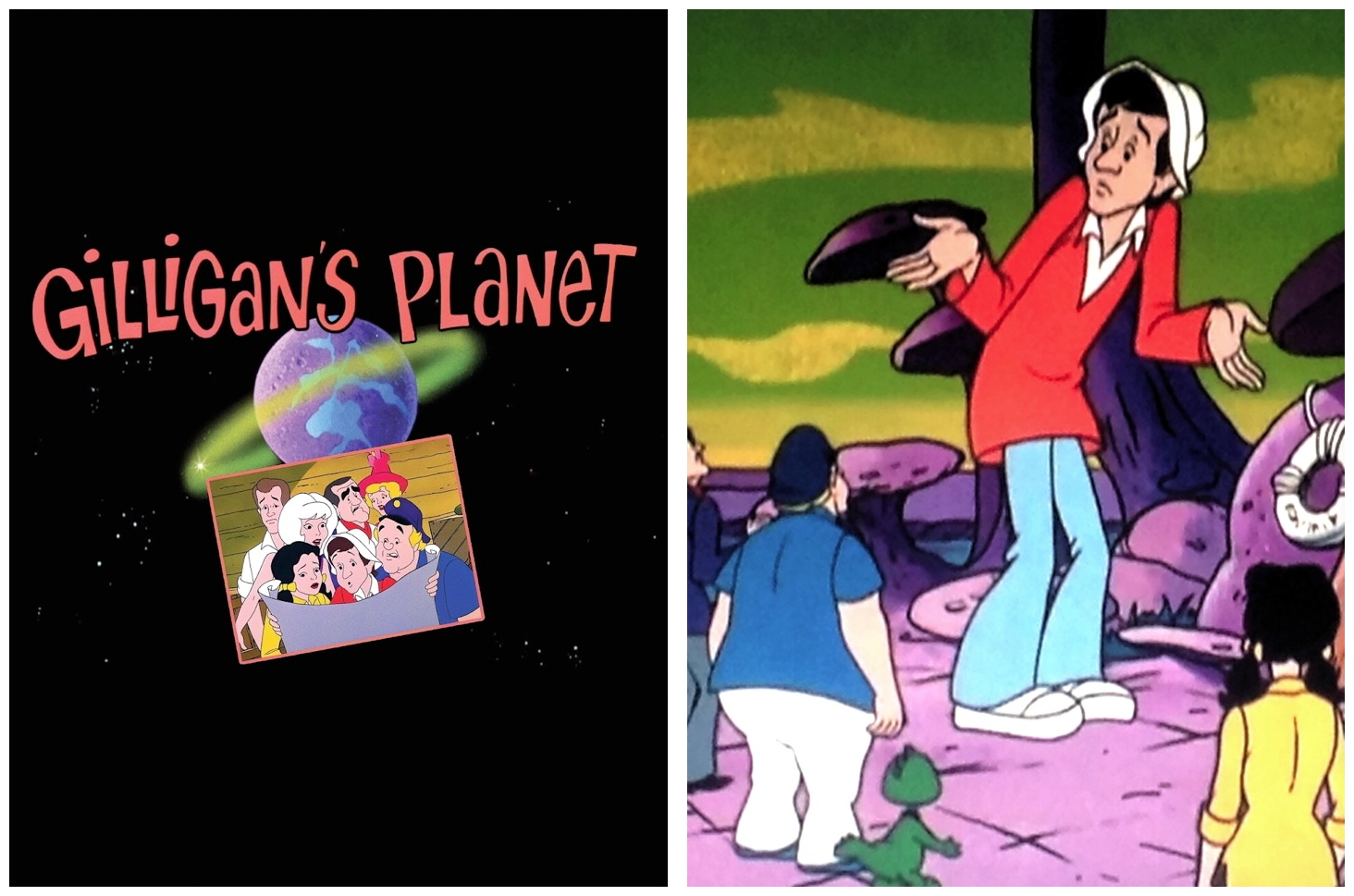
GILLIGAN’S PLANET (13 episodes 1982-1983) starring the voices of Bob Denver, Alan Hale Jr, Jim Backus, Natalie Schafer, Dawn Wells & Russell Johnson. Gilligan’s Planet was no doubt the result of a very bright television executive realising that the best thing to do with a very popular franchise – Gilligan’s Island – beset with a rapidly aging cast, is to turn everybody into cartoon characters. The strategy was tried – successfully – once before with The New Adventures Of Gilligan (1974-1977) on ABC. That Saturday-morning animated series basically picked up where the live-action series left off, with the castaways stranded on a tropical island. The makers of Gilligan’s Planet had more ambitious plans for the survivors of the Minnow disaster. I’ll allow the theme song to explain: “We’ve got a brand new story of the castaways. We left our tiny island after years and months and days. We built a little spaceship, it’s crude but it could fly. We left our home and lost our way between the stars and the sky. We went from an island to a star, lost on Gilligan’s Planet. Gilligan and Skipper, the millionaire, his wife, the Professor, movie star and Mary Ann began a brand new life. What creatures will we encounter? What riddles do we face? What mysteries now haunt us in this strange enchanting place? Our adventures are the best by far, here on Gilligan’s Star…Planet!” Hmm. Suddenly it becomes all too clear why Tina Louise had refused to hang out with these Gilligan people for so long.
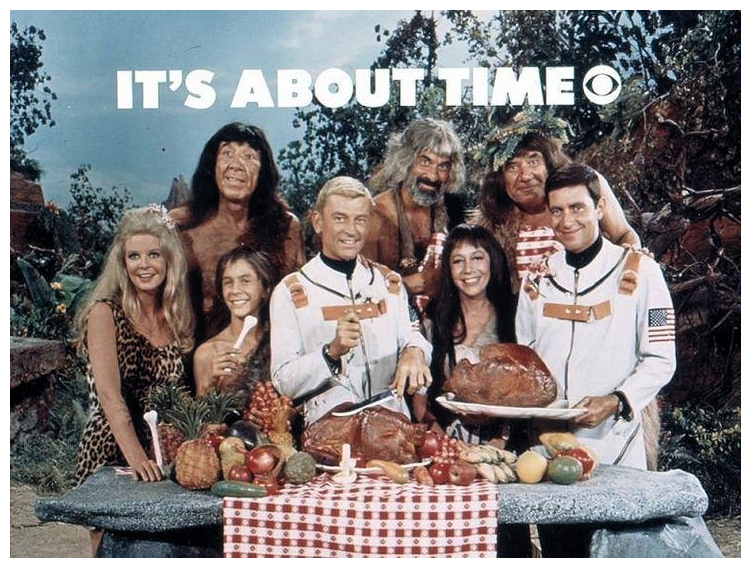
IT’S ABOUT TIME (26 episodes 1966-1967) starring Jack Mullaney, Frank Aletter, Imogene Coca & Joe E. Ross. Here is where Gronk lies, in this dumb sitcom about two 20th century astronauts – Hec and Mac – who take a wrong turn in orbit and find themselves splashing down on a prehistoric Earth inhabited by stock-footage dinosaurs and actors outfitted in bushy Beatles wigs. Imogene Coca told the L.A. Times, “The only thing I know is that we’re going to look different from any other show.” While Coca, who proved her comic worthiness in Your Show Of Shows, no doubt meant well, she was flat-out wrong. It’s About Time didn’t look all that different from any other show on the air. In fact it looked – and sounded – a lot like Gilligan’s Island. No surprise there. Both shows were created by Sherwood Schwartz, who would later distinguish himself with that probing study of familial life, The Brady Bunch. Debate of relative artistic merits aside, Schwartz and CBS – home of both Gilligan’s Island and It’s About Time – were nothing if not cost-efficient. Both shows appear to have been filmed on the same lagoon set, and even the background music often lapsed into Gilligan-esque strains. It was enough to make you think that Ginger was just waiting for the proper moment to pop out from behind a tree and begin seducing one of the astronauts. But, for all that the show borrowed from Gilligan’s Island (including Bob Denver lookalike Jack Mullaney as the dimwitted Hec), It’s About Time failed to learn the most important lesson from the Skipper and company – how to make good silly TV. Richard Donner, who would go on to direct such big-screen successes as Superman (1978) and Lethal Weapon (1987) helmed the pilot episode, but not even his eye, nor a format change toward the end of the show’s first and only season (the astronauts repair the spaceship and return to modern times with the cave family in tow) could save this show from TV Hell. As Variety predicted in 1966, “It’ll take more than caveman clubs to bat down the competition.” Indeed, It’s About Time didn’t have the strength nor the wits to fight back.
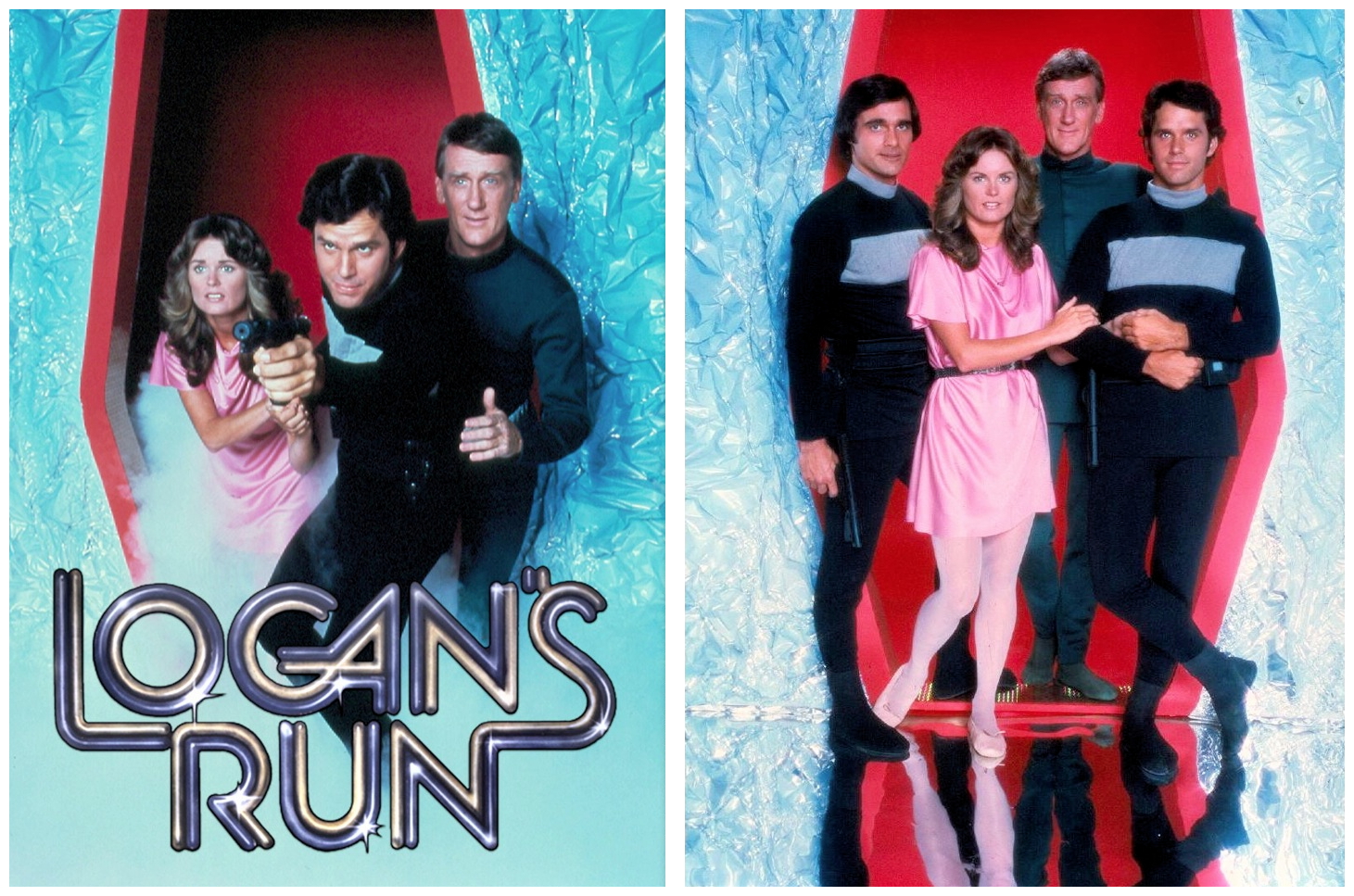
LOGAN’S RUN (14 episodes 1977-1978) starring Gregory Harrison, Heather Menzies & Donald Moffat. Even before NBC could detonate its next sci-fi bomb, CBS rushed to the air with this small-screen version of the 1976 feature film of the same name. Filling in for Michael York in the title role was a pre-Trapper John Gregory Harrison. As the fugitive Sandman Logan, Harrison roamed a poorly disguised Los Angeles hillside terrain (making another of its numerous appearances in seventies TV) with two companions – former Sound Of Music (1965) child star Heather Menzies sporting a fluffy Farrah Fawcett hairdo, and an android named REM played by respected character actor Donald Moffat. The intelligent-yet-childlike REM is an ancestor of Data in Star Trek: The Next Generation: “Call me an android, a cyborg, what you will, but not a robot!” As in the movie, Logan and Jessica were on the run from a society circa 2319 where people were terminated by Sandmen when they reached the age of thirty. The buzz around the MGM studio lot prior to the show’s premiere was that the series would be better than the movie. The Hollywood Reporter insisted that the TV version would be an improvement over its big-screen parent: “Logan’s run should be a long one. Outlook excellent.” That turned out to be a bit of an overstatement. THR failed to mention that the show was dreadfully boring. It never made a dent in its Friday night time-slot against The Rockford Files on NBC. The only running Logan does nowadays is on cable, where the short-lived series occasionally airs.
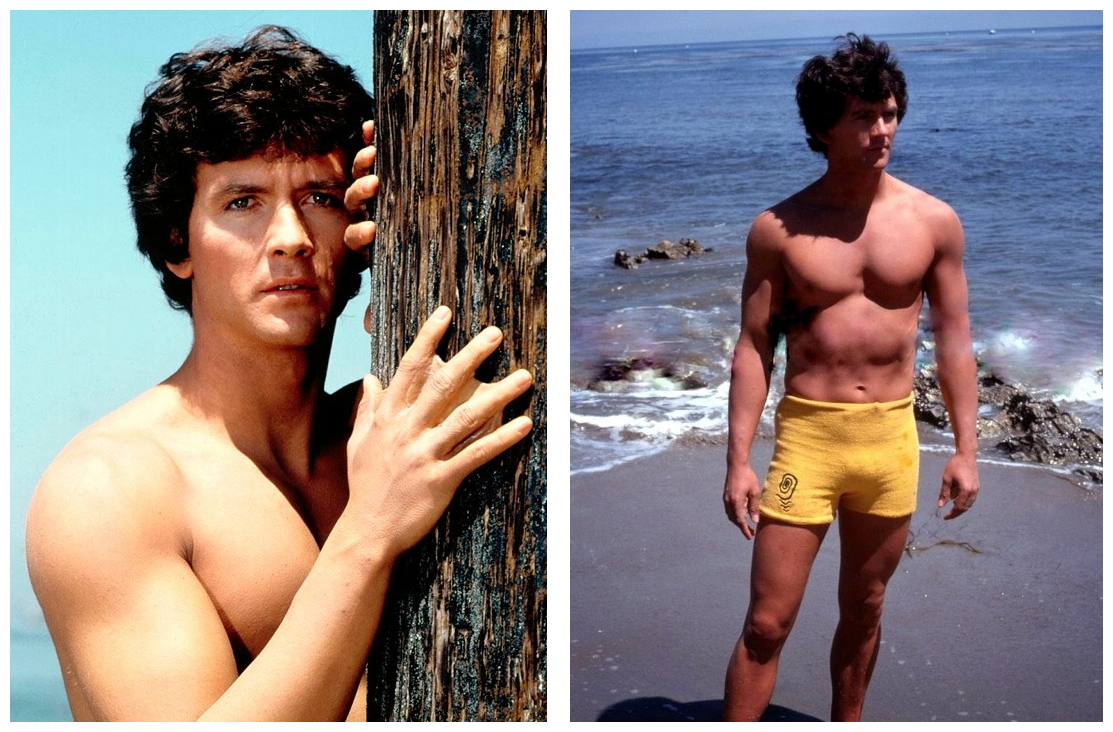
MAN FROM ATLANTIS (4 movies plus 13 episodes 1977-1978) starring Patrick Duffy, Belinda Montgomery & Victor Buono. Okay, so The Fantastic Journey didn’t work but, in 1977, NBC was nothing but plucky, this time hoping to lure young sci-fi fans to its network by giving them a pre-Waterworld (1995) guy with gills and webbed fingers and toes. Cool! Man From Atlantis began life as a quartet of made-for-TV movies that aired early 1977. The premise was such – a young skinny guy washes up on a beach. A young bright doctor figures out that young skinny guy is really a descendant of Atlantis. Just one problem – young skinny guy (soon dubbed Mark Harris by the bright young doctor) can’t remember how to get home. Oops! Problem solved – young bright doctor and her military friends let Mark hang out with them and go on underwater missions. By the time the show became an ongoing series late 1977, Mark had acquired really super powers, which sometimes necessitated that he beat up three or four guys to show us he was THE MAN from Atlantis. Essentially it represented television’s attempts to satisfy the shallowest of gene pools. Apparently I am immune to the power of evocative dialogue such as this affecting soliloquy by Mark: “I do not speak the language of fish, the intercurrent took me to the deep sound channel and I listened to the whales talk.” Maybe it’s because I’m unmoved by the sight of a buff Patrick Duffy in yellow swimming trunks, or maybe viewers, like myself, simply recognised Man From Atlantis for what it really was – poor television.
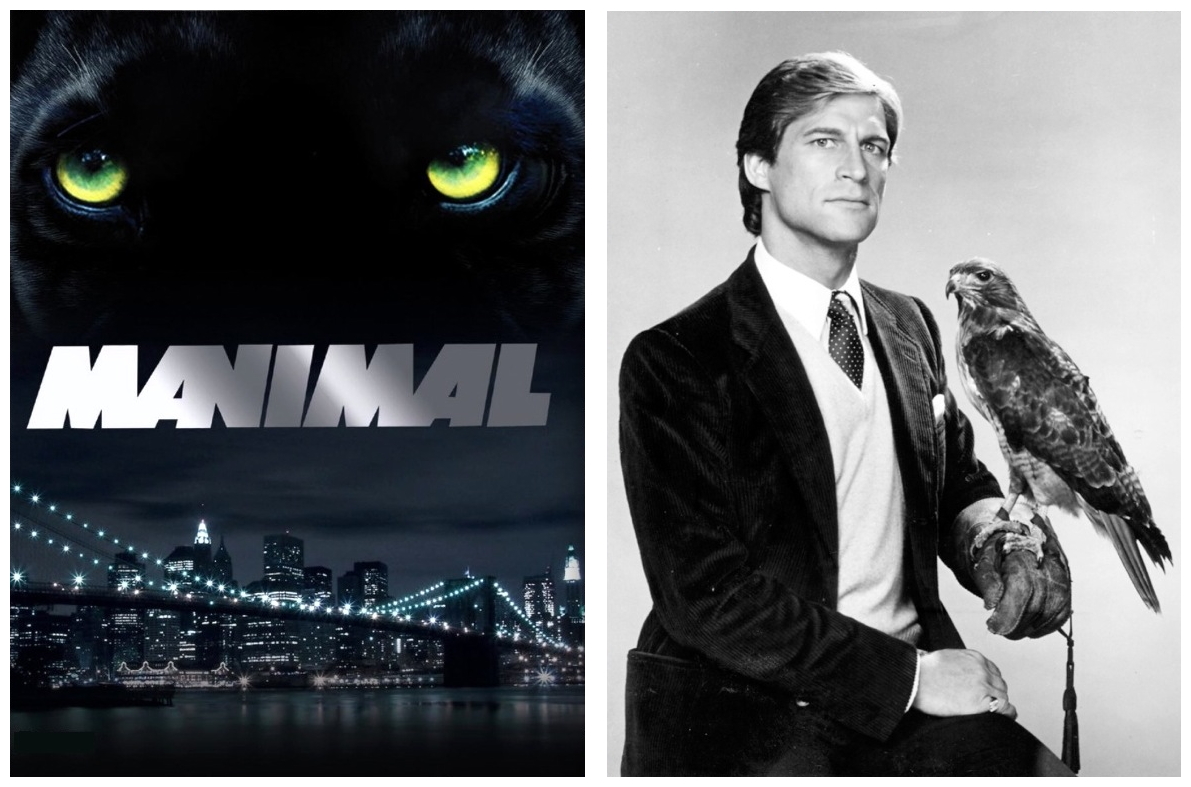
MANIMAL (8 episodes 1983) starring Simon McCorkindale & Melody Anderson. NBC promoted the show thusly: “Everything you know about adventure is about to change, right before your eyes!” Simon McCorkindale was Manimal – by day a college professor who taught animal behaviour, by night a special police assistant who could ‘transmutate’ himself into a black panther or a pussycat or a shark. Viewers could be tipped off that a spectacular Manimal change was near when McCorkindale’s eyes bulged and his hands shook (remember, this was in the days before two-dollar morphing programs were available for your home computer). Critic Howard Rosenberg: “Here’s hoping he turns into a fly and gets swatted. Manimal is the kind of series that had to be thought up by people getting sloshed at a bar.” Actually, I know from personal experience that people getting sloshed could probably think of something much better.
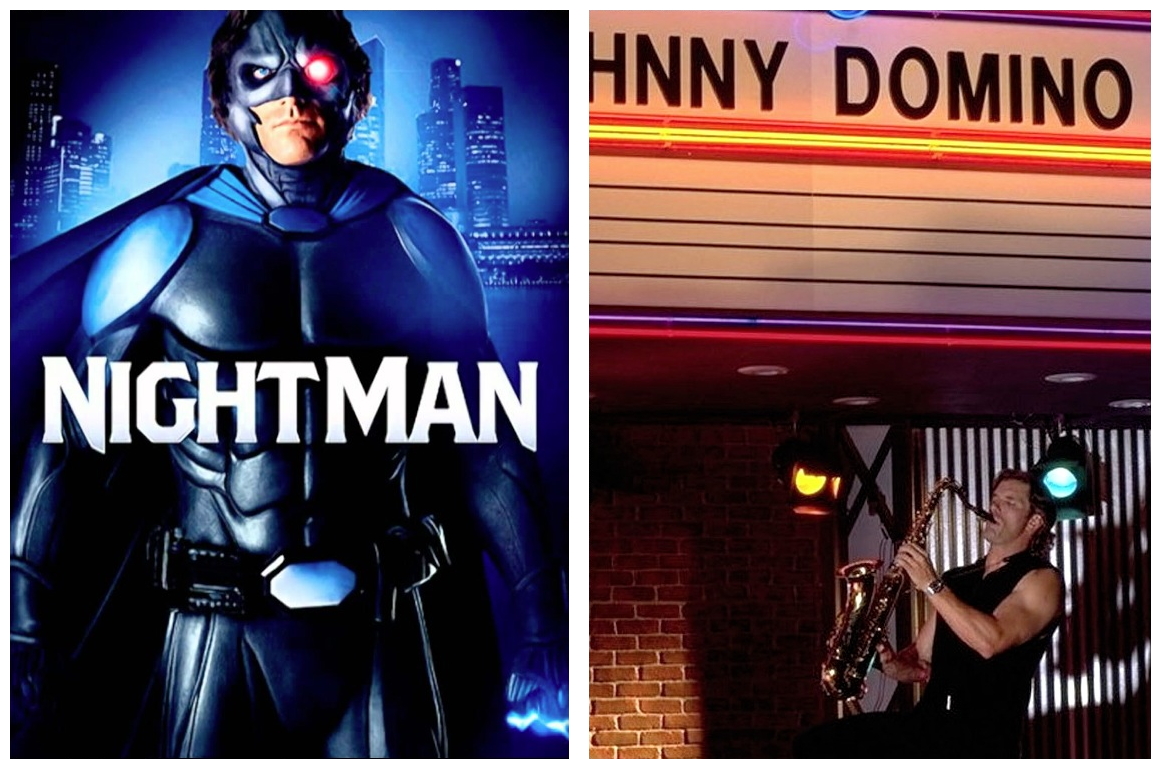
NIGHT MAN (44 episodes 1997-1999) starring Matt McColm, Kim Coates & Earl Holliman. Produced by the infamous Glen A. Larson and loosely based on the Malibu Marvel comic character of the same name, Night Man was a superhero whose real name is Johnny Domino, a saxophonist in a nightclub. Although Night Man has no real superpowers, he owns a special bulletproof bodysuit that gives him several abilities, including flight, camouflage, and advanced sight via the round red lens over his left eye. Although he often fights new enemies in each episode as the series progresses, his nemesis is computer technologies billionaire Kieran Keyes, who would slay Johnny’s father, Frank Domino, in the premiere of the second and final season.
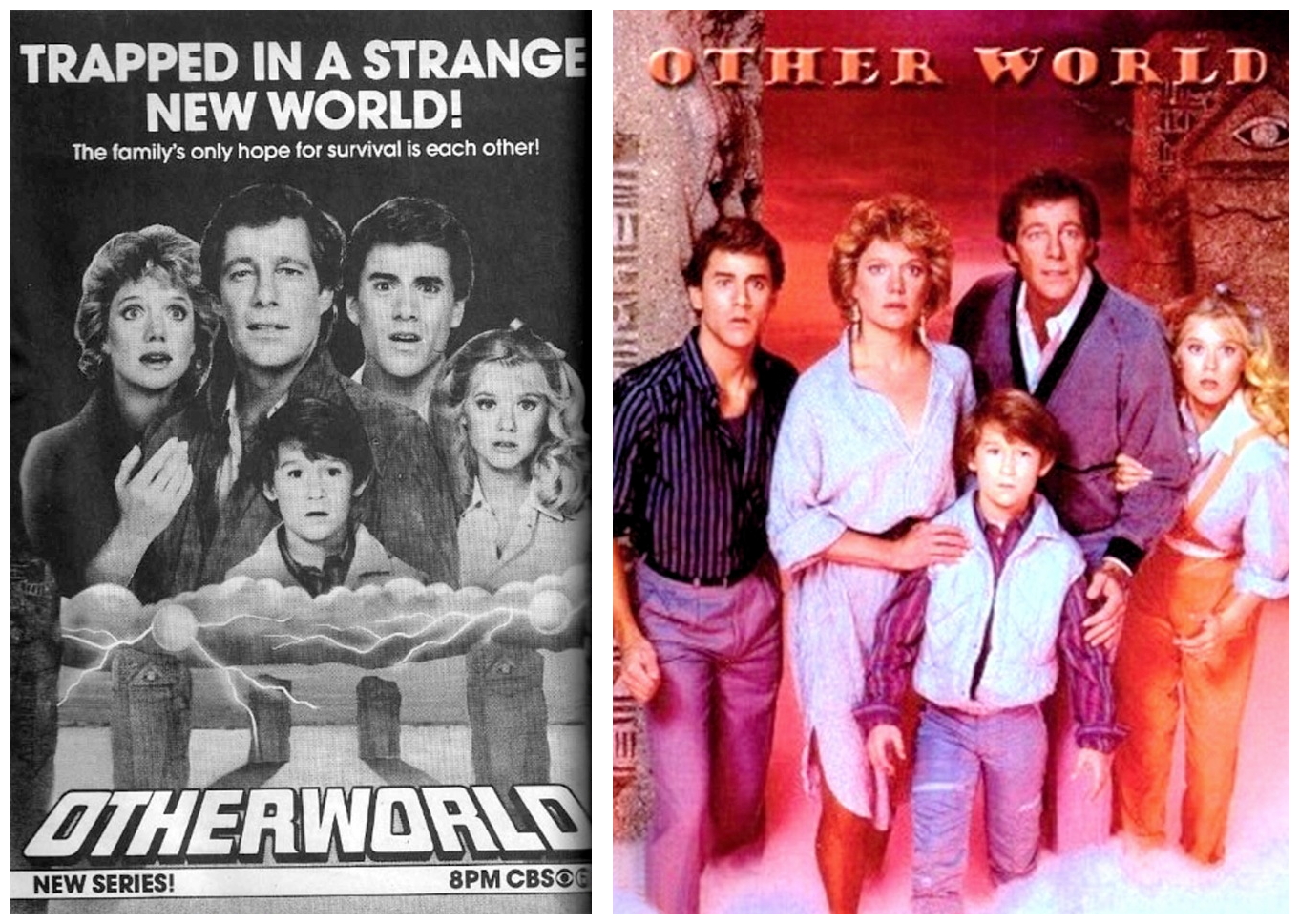
OTHERWORLD (8 episodes 1985) starring Sam Groom & Gretchen Corbett. Lost In Space meets The Fantastic Journey in a short-lived series about a family lost in another dimension. The Sterlings, touted as a typical Southern California family, slip into the parallel universe of Otherworld while on a sightseeing tour of the ancient pyramids, when a strange alignment of the planets opens up a portal between the two universes. They discover that the Great Pyramid was built, not as the mere tomb of a king, but as a barricade at the portal, and that thousands of years ago it was common for people to pass between the two dimensions. Not so now, however, and Hal and June Sterling and their three children become fugitives in this alien environment as they strive to reach the Capital Province of Imar, where the supreme governors have the power to return them to their own world. It’s a perilous task, as they are pursued by the Zone Troopers of the Imperial Kommander Nuveen Kroll. Otherworld’s eight episodes ranged from the humorous (Rock’n’Roll Suicide) through to the blatantly ludicrous (Village Of The Motorpigs) to the excellent (Mansion Of The Beast), but they never did make it back home.
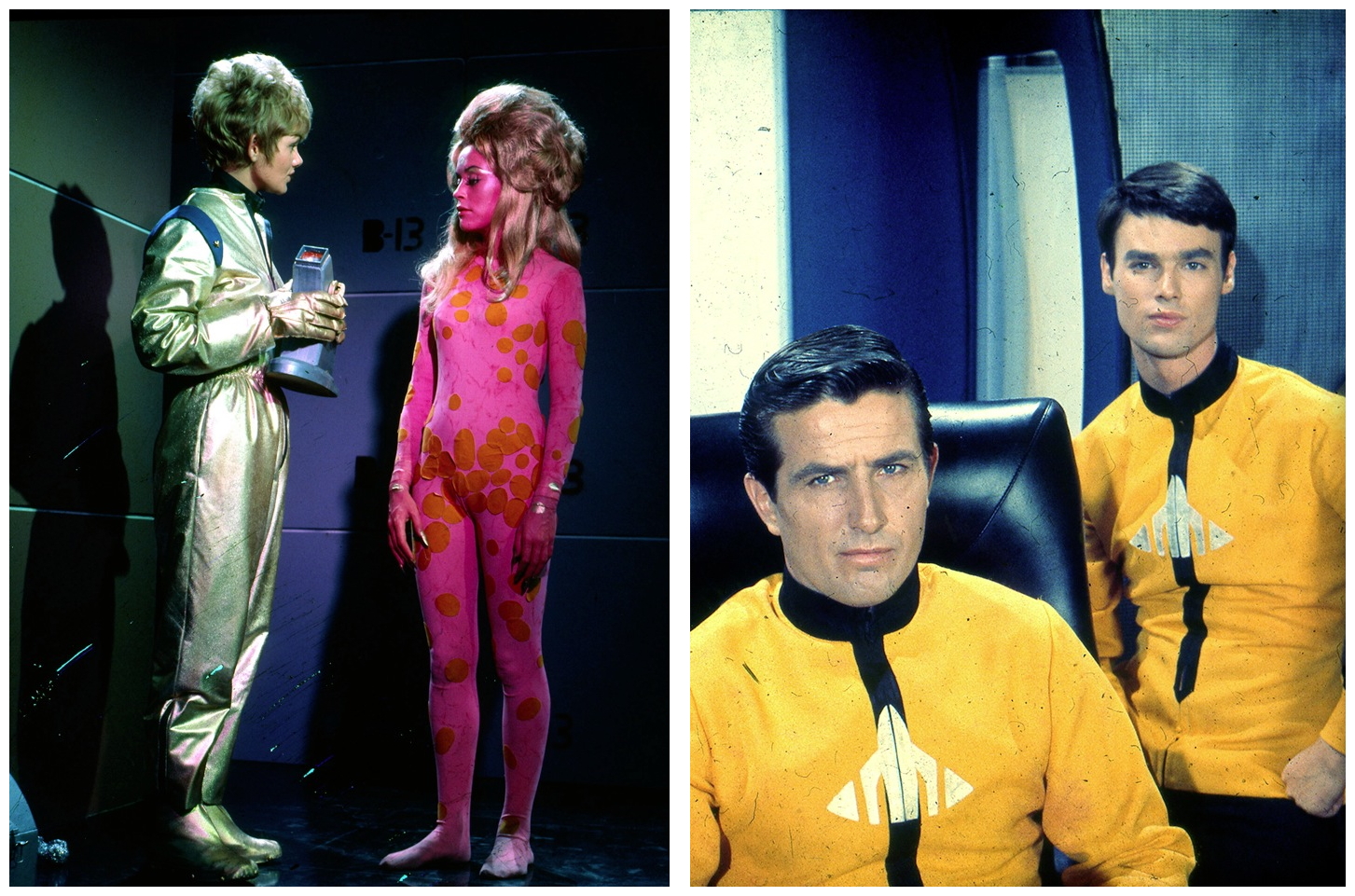
PHOENIX FIVE (26 episodes 1970) starring Mike Dorsey, Patsy Trench & Damien Parker. Low-budget Australian space series that cheaply went where Star Trek had boldly gone before. It followed the adventures of the crew of the Galactic Patrol ship Phoenix Five, the most sophisticated craft in the Earth Space Control fleet. This handpicked team – Captain Roke is a typical Kirk clone with a solution to every problem, Ensign Adam Hargraves is a young space cadet always ready to shoot first and skip the questions altogether, compassionate cadet Tina Culbrick, and the computeroid Carl – roamed the planets protecting galactic citizens and warding off the repeated plots and attacks of the evil humanoid Zodian and a rebel scientist named Platonus. Platonus is a chip off the old Ming block and dreams of ruling the galaxies. Each tale had a happy ending and a strong moral message, but the show’s limitations were apparent in the lack of supporting actors, scarce few sets with quarries and scrubland doubling for alien worlds, and very little model work (mostly of the Phoenix flying through space).

THE POWERS OF MATTHEW STAR (22 episodes 1982-1983) starring Peter Barton & Louis Gossett Jr. Bad sci-fi is back, and NBC’s got it! This time the network introduced us to a prince from the planet Quadris who, following some trouble back home with intergalactic armadas and whatnot, came to Earth with his guardian Walt: “Here on Earth the prince is known as Matthew Star. He has friends, people who love him, and me – I’m the only one who knows how special he is. Life for us is a series of joys and dangers, for enemy assassins constantly come to destroy us.” Bummer. The opening credit sequence containing this narration in each episode is a mind-numbing ninety seconds long. What exactly were Matthew Star’s powers? The publicity photos seen in TV Guide show that Matt could levitate an entire oil lamp just by staring at it real hard. As you might have surmised, The Powers Of Matthew Star was one of those action-packed sci-fi series that left viewers breathless from an hour’s worth of roller-coaster entertainment. Witness the following synopsis from TV Guide: “Matthew’s brilliant classmate invents a revolutionary paint that has a couple of unintended side-effects.” Revolutionary paint? Cool! Star Trek was never like this! Unfortunately, the power that Matthew Star lacked was the one that would make viewers care about him and his little Quadrian problems. This guy was definitely not worth giving up The Dukes Of Hazzard for.

QUARK (8 episodes 1978) starring Richard Benjamin, Tim Thomerson & Conrad Janis. Richard Benjamin looks like a pretty smart guy, so you’d figure he’d be on a pretty smart show. You’d figure that, but the premiere episode of Quark, a sci-fi parody, was called May The Source Be With You, an hour-long take-off of Star Wars IV A New Hope (1977). Oh well, at least Quark was about ten years more timely in the parody department than Mel Brooks’ Spaceballs (1987). In a bit of brilliant programming strategy that made NBC the last-place network it would continue to be until the mid-eighties, Quark served as the time-slot lead-in to the military sitcom CPO Sharkey starring Don Rickles. The show was about Captain Adam Quark in the year 2222 who dreamed of engaging in heroic space battles. Instead he was assigned to a garbage scow. His mission, to be a trash-picker to the stars. Otto was Quark’s commanding officer, and Gene/Jean was his transgender first officer. Benjamin puts across a marvellously funny performance, as does Thomerson and the show was, in fact, genuinely smart, particularly by late-seventies American TV standards. Sadly, the low budget, poor pacing and terrible laugh-track proved too much, and Quark was no match for the likes of Donnie & Marie on ABC and Wonder Woman on CBS. This garbage scow was closed for business permanently.
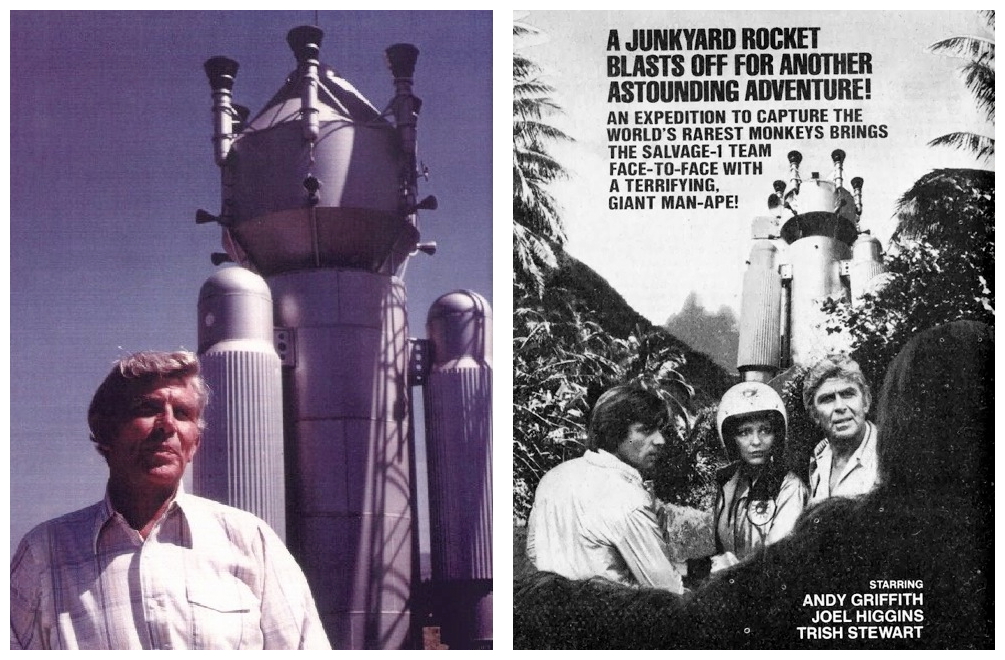
SALVAGE ONE (20 episodes 1979) starring Andy Griffith, Joel Higgins & Trish Stewart. There are only two things you need to know about Salvage One and why it was destined to be quickly removed from a network’s schedule and our collective memories. Firstly, the show was about a junk dealer who built, among other things, an orbiting spacecraft out of garbage. Secondly, the network’s ad for the show’s premiere episode stated, “An expedition to capture the world’s rarest monkey brings the Salvage One team face-to-face with a terrifying ape-man!” Are we clear on this now? Good. It’s not known if the Salvage One people ever crossed paths with Adam Quark. Maybe they could have traded recycling tips? (sidenote: the blueprints of the Salvage One spaceship Vulture can be seen in the opening credits of the animated spy show Archer).
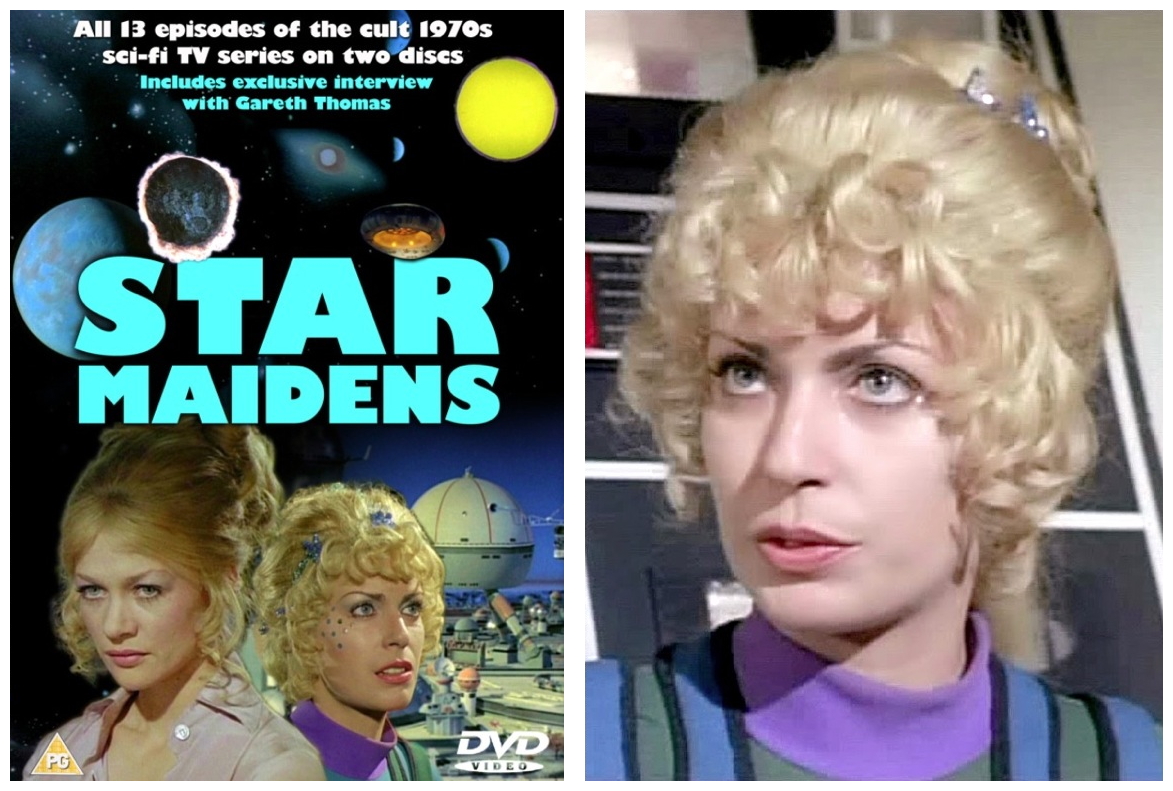
STAR MAIDENS (13 episodes 1976) starring Judy Geeson, Dawn Adams, Gareth Thomas, Lisa Harrow & Pierce Brice. Promoted as a tongue-in-cheek fantasy, this Anglo-German production depicted a role-reversed planet called Mendusa, where women rule and men are the domestic drudges. Two male servants, Adam and Shem, escape to Earth in a stolen spacecraft in search of a better life. But they are pursued by Supreme Councillor Fulvia, who wants to re-chain them to the kitchen sink. When they are unable to recapture the runaways, Fulvia and her crew capture two Earth hostages instead, thus the scene is set for a culture clash. Produced at a cost of around US$75,000 per episode, Star Maidens was sold to more than forty countries as diverse as America, Hungary, South Africa, and the Middle East. But the maidens won few admirers, something producer Ian Warren attributed to the difficulty of doing comedy with the Germans: “It was meant to be fantasy but the Germans kept trying to make it more realistic!” There were plans to make a second season in Canada but they proved to be far too expensive and were quietly shelved at bottom of a locked filing cabinet stuck in a disused lavatory with a sign on the door saying ‘Beware Of The Leopard’.
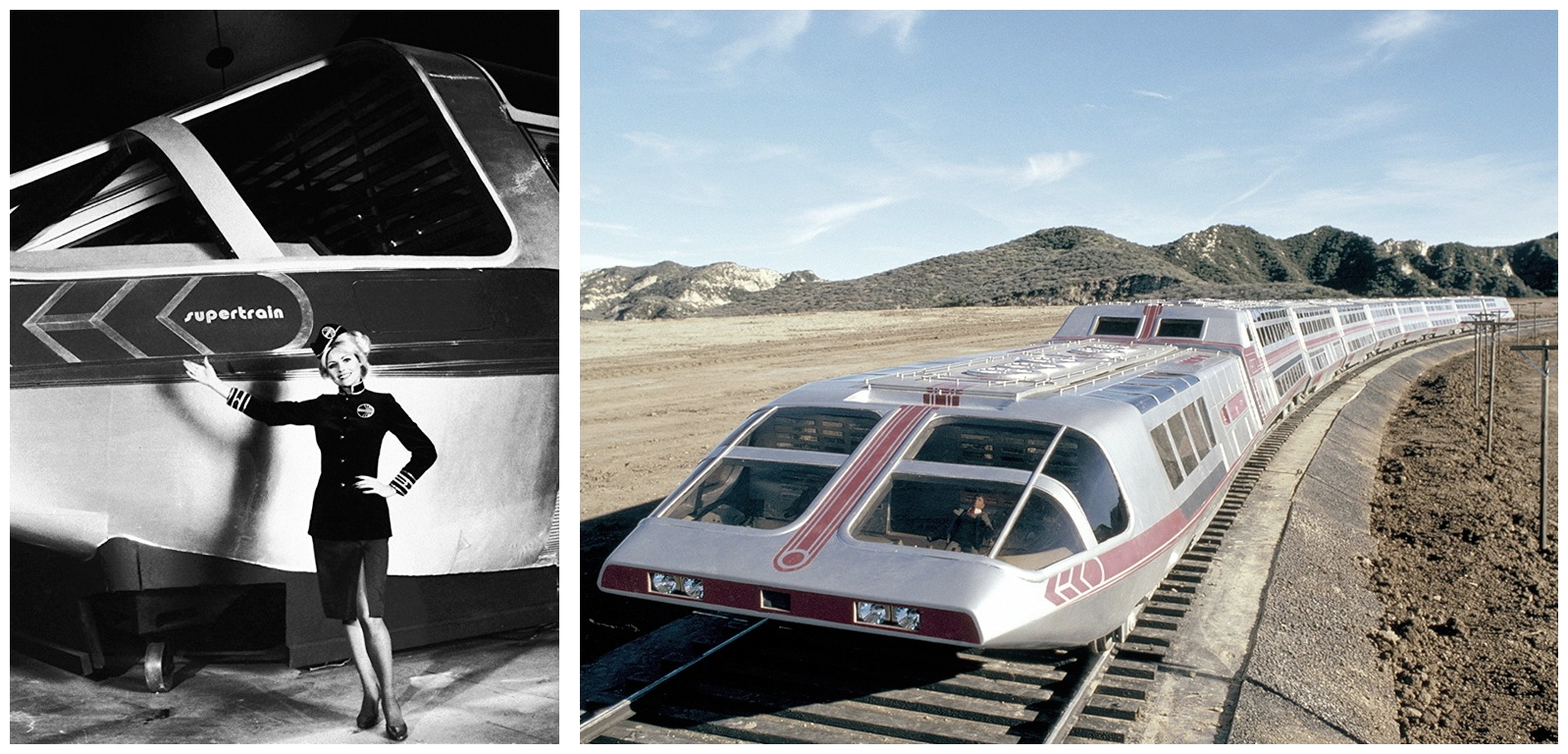
SUPERTRAIN (9 episodes 1979) starring Edward Andrews, Nita Talbot & Robert Alda. One of the most expensive failures in the history of network television, Supertrain was an anthology series set on a gigantic high-speed train that was appointed like a luxury cruise ship. The massive locomotive pulled nine huge coaches from coast to coast at speeds in excess of 200 miles per hour. Available to the train’s passengers was a full-sized swimming pool, a gymnasium complete with steam room, a fully staffed and equipped medical centre, and a swinging nightclub discotheque. The sets and miniatures were elaborate and expensive, costing millions of dollars. The train, after all, was the real star of the show. Stories were an uneven mix of comedy, mystery and adventure, and featured assorted guest stars, all interwoven with the regular activities of the train crew, not unlike the hugely popular Love Boat. Despite extensive advance publicity which attracted a huge audience to the pilot episode, Supertrain’s ratings dropped like a rock and was pulled from the NBC schedule barely one month after it had begun. Efforts were made to rework the concept, including swapping production teams and eliminating some of regular cast, but it didn’t help. Less than six months after its premiere, Supertrain was derailed for good.
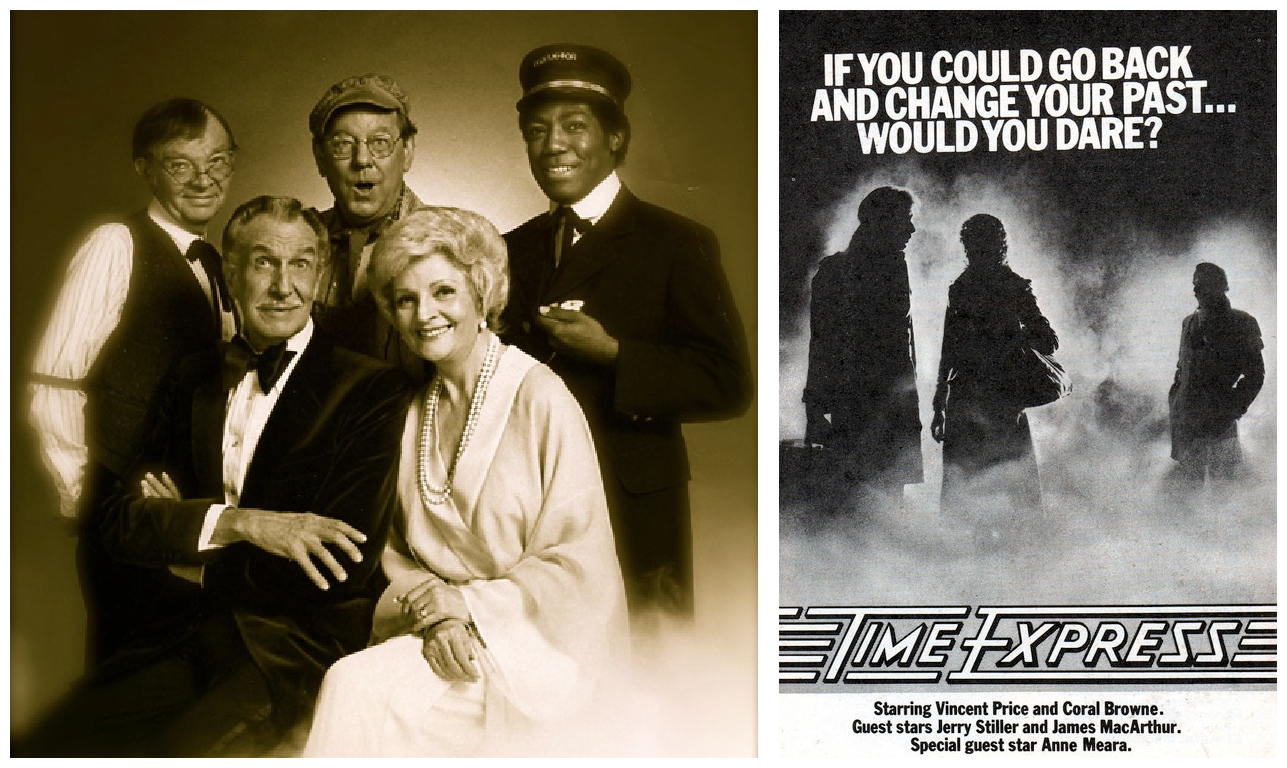
TIME EXPRESS (4 episodes 1979) starring Vincent Price & Coral Browne. This peculiar program was a sort of supernatural variation on Fantasy Island. Passengers who boarded the gleaming Time Express found themselves on an eerie train ride through a mist-filled sky, going back through time to destinations that were turning points in their lives. There they could disembark and attempt to alter decisions they had made long ago, in hopes of changing all that had subsequently happened to them as a result. The charming but mysterious couple who escorted the passengers to their destinations were Jason and Margaret, played by distinguished husband-and-wife duo Vincent Price and Coral Browne. After only four journeys, the Time Express was shunted away, never to leave its shed ever again. I have no doubt many of these poorly-conceived shows will nevertheless have their defenders, and we could all probably think of series much more deserving of the title of Worst Science Fiction Show Of All-Time. There is also the Kitsch Factor to be considered (it’s what makes Ed Wood films so entertaining), as well as the Nostalgia Factor (many fans remember seeing these shows when they were first run and still love them, despite not aging very well – the show nor the fan). Enough crying over lost opportunities, please join me again next week when I have another opportunity to give your televisual sensibilities a damn good thrashing with the ugly stick for…Horror News! Toodles!

20 Schlocky Sci-Fi Shows
 Horror News | HNN Official Site | Horror Movies,Trailers, Reviews
Horror News | HNN Official Site | Horror Movies,Trailers, Reviews

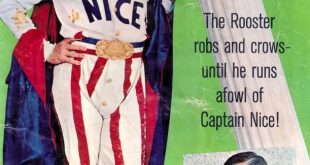
I actually liked `Quark`, enough that I bought the DVDs when they were available.
That’s the trouble with some lists, one can’t please all the people all the time, and one must try to be objective. I state that Quark was genuinely smart and Tim Thomerson is a pure delight to watch, but the low budget, poor pacing and terrible laugh-track proved too much, and it was deemed a failure. Many of these shows were considered expensive failures. There’s also the matter of the Nostalgia Factor – many people saw these shows as kids and, as adults, refuse to hear a bad word against their favourite show, despite the fact that they are virtually unwatchable by today’s standards.